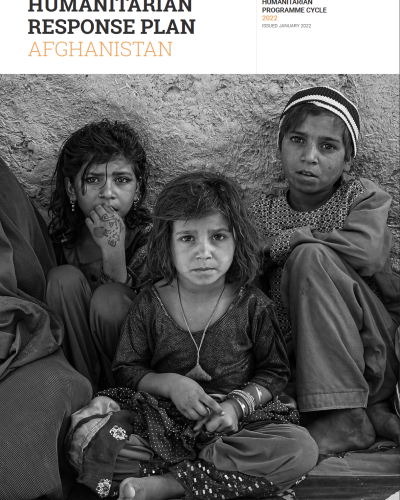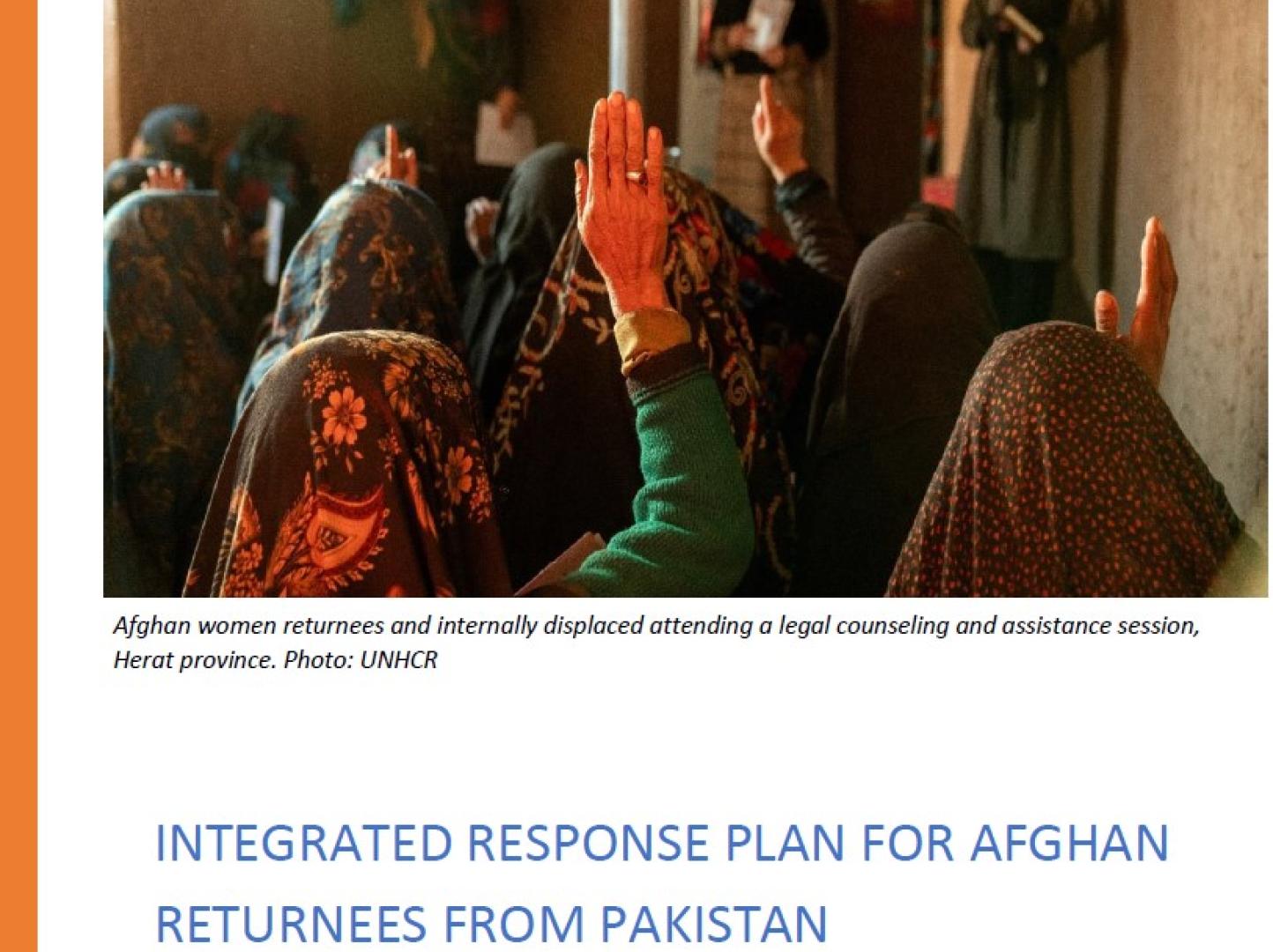Afghanistan Humanitarian Response Plan 2022

PEOPLE IN NEED
24.4M
PLANNED REACH
22.1M
REQUIREMENTS (US$)
$4.44B
OPERATIONAL PARTNERS
158
Foreword
We go into 2022 with unprecedented levels of need amongst ordinary women, men and children of Afghanistan. 24.4 million people are in humanitarian need – more than half the population. Years of compounded crises and under-investment have resulted in nearly four times the number of people in need of lifesaving humanitarian assistance compared to just three years ago.
The country is currently facing the second drought in four years, the worst of its kind in 27 years. As a result, Afghanistan now has the highest number of people in emergency food insecurity in the world – this is a terrifying 35 per cent increase from the same time last year. More than one in two children under-five is facing acute malnutrition and will be at risk of death if immediate action is not taken. The already over-burdened health system is straining to survive numerous shocks, including due to the continuing impact of COVID-19, spikes in waterborne diseases, frustratingly persistent strains of polio and a sudden collapse in predictable financing that has kept the nationwide health infrastructure afloat. The economic crisis currently facing the country has sent prices skyrocketing, while simultaneously diminishing people’s purchasing power. People are increasingly desparate, have exhausted nearly all coping mechanisms and have resorted to taking on unmanageable debt burdens and relying on dangerous coping mechanisms to survive. The situation of women and girls is particularly dire as their rights and opportunities have become increasingly restricted. The burden the people of Afghanistan have been forced to carry is far to heavy to manage alone.
Over the course of a tumultuous and unpredictable year, the humanitarian community has proven its capacity to scale-up to meet new needs, including in response to recurrent natural disasters, escalating conflict, the withdrawal of international forces and the shift in the governance structure. I am proud to say that despite the numerous challenges created by the worsening security environment and increase in overall need, humanitarian organisations have persistently proven their commitment to stay and deliver and increase overall reach. Non-Government Organisations (NGOs) remain the backbone of this response and I look forward to further investment in sustaining a vibrant and engaged NGOs and civil society sector in the year to come. In 2022, humanitarian organisations have an ambitious plan to reach 22.1 million people with life-saving multi-sectoral assistance.
In order to do this, the 2022 HRP requires $4.4 billion. People’s survival depends on the 158 dedicated humanitarian organisations operating in Afghanistan receiving sufficient financial resources to deliver. The consequences of late or inadequate funding are very real. Years of funding shortfalls have increasingly required humanitarians to try to do more with less and the limited rollout of complementary development assistance and sudden cessation of predictable development assistance have all been factors in the worsening outlook for 2022.
We have made historic strides in working to develop cross-sector approaches with development actors in 2021 based on both life-saving activities and support for services that address basic human needs. Jointly we have developed a common snapshot of overlapping needs and activities that recognises the multidimensional impact of the current crisis. I look forward to the implementation of this innovative and crucial cross-pillar approach in 2022.
The Humanitarian Country Team (HCT) and InterCluster Coordination Teams (ICCT) are committed to applying a strong gender and protection lens to their work in 2022 acknowledging the disproportionate impacts of the current crisis on women, children and people with disability. Given the scale of vulnerability in Afghanistan, this effort will be guided by a range of both new and well-established technical working groups focused on gender, disability inclusion, genderbased violence (GBV), child protection, accountability to affected people (AAP) and protection from sexual exploitation and abuse (PSEA). The Humanitarian Country Team will also continue to be led by advice from Afghans themselves, a crucial function that will be supported by dedicated local experts, such as the Afghan Women’s Advisory Group. Sustained, principled humanitarian access to people in need has expanded significantly over the last years, and will continue to be built upon in 2022, and our negotiations will be guided by the Joint Operating Principles (JOPS) and with support from the Humanitarian Access Group.
The humanitarian community stands beside the people of Afghanistan, during what is undoubtedly one of the country’s most difficult periods. Given the sheer scale of needs, we are all called upon to remain in solidarity with ordinary Afghans and to expand efforts to reach more people with the life-saving assistance they urgently need to survive. We must act collectively and creatively in this pivotal moment to reduce suffering, rebuild lives and livelihoods and ensure the rights of the most vulnerable are upheld. I urge donors to stay engaged in the wellbeing of the people of Afghanistan, and to give early and generously to humanitarian organisations. The people of Afghanistan cannot wait and the cost of inaction is simply far too high
Dr. Ramiz Alakbarov Afghanistan Humanitarian Coordinator










